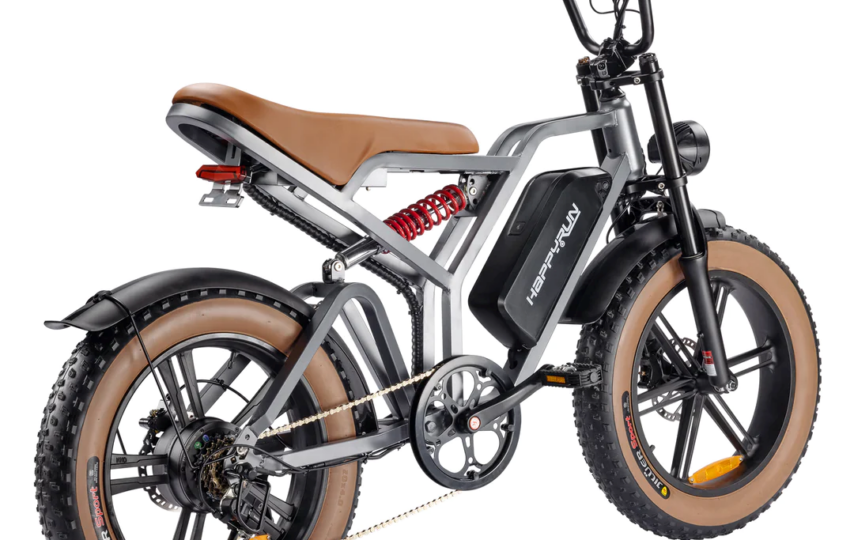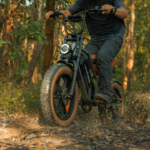Electric mountain bikes, also known as e-MTBs, bring a new dimension to trail exploration with battery-powered assistance that transforms uphill challenges. On the other hand, electric road bikes provide a surge of electrified speed for an exhilarating experience on city streets and country lanes. This comprehensive guide delves into the advantages of both electric mountain and road bikes, essential factors to consider when making a purchase, and recommended models that will elevate your cycling escapades.
Embark on an electrifying journey across trails and roads as we delve into these cutting-edge electric bike technologies!
The Advantages of Electric mountain bike
E-MTBs offer a host of benefits that enhance the trail riding experience:
- Reduced physical effort when climbing and conquering hills
- Tackling more demanding off-road trails and steep inclines
- Increased downhill runs per ride for added excitement
- Expanded range for overall off-road exploration
- Improved stability on rough and uneven terrain
- Infusion of speed and thrill to trail riding
- Wider appeal to a diverse range of trail enthusiasts
Essential Components of Electric mountain bikes
Setting them apart from standard mountain bikes, e-MTBs incorporate key components such as:
- Mid-drive electric motor: Centrally positioned at pedal cranks, optimizing power transfer during climbs and enabling precise power application.
- Rechargeable lithium-ion battery: Typically ranging from 36V to 48V and 500Wh to over 1kWh in capacity, offering 30 to 80-mile ranges.
- Powerful disc brakes: Necessary for speed control and modulation, with hydraulic discs delivering strong braking in various conditions.
- Suspension fork: Providing 80-150mm of travel for absorbing bumps and enhancing control during descents, some models also feature rear suspension.
- Wide tires: Utilizing knobby 27.5” or 29” tires with widths of 2.6-3.0” for improved traction and shock absorption, while tubeless designs prevent pinch flats.
- Integrated display/controls: Presenting crucial data such as speed, distance, battery level, and power mode, allowing convenient power adjustments.
Specialized components on e-MTBs elevate the trail riding experience to new heights.
Selecting the Perfect Electric mountain bikes
When choosing an e-MTB, keep these essential factors in mind:
- Robust motor: Opt for a mid-drive unit offering ample torque for climbing steep grades without overheating, ideally within the 250-750W range.
- Battery capacity: Larger batteries equate to extended range; consider models with at least 500Wh, and some even offer 700Wh or more.
- Suspension: Front suspension is essential, with 100-150mm of travel optimizing bump absorption and handling; rear suspension further enhances traction and control.
- Reliable brakes: Hydraulic disc brakes equipped with substantial rotors ensure precise speed modulation and potent stopping power on descents.
- Tire width: Seek 27.5” or 29” tires with a width of at least 2.5” to provide solid grip on loose terrain, while tubeless compatibility is desirable.
- Gearing versatility: A broad cassette gearing range enables maintaining cadences while climbing, some models boasting a 10-50 or greater spread.
- Wheel size: Opt for 29” wheels for superior obstacle traversal or 27.5” wheels for enhanced agility.
- Frame materials: Evaluate frame materials such as aluminum alloy or carbon fiber for reduced weight, or steel for added durability.
- Riding terrain: Ensure the chosen e-MTB aligns with the singletrack, gravel, hills, and conditions you intend to conquer.
Prioritize power, comfort, control, and quality components to discover the ideal e-MTB for your trail endeavors.
Exploring the Realm of Electric Road Bikes
Electric road bikes blend the efficiency of road cycling with the boost of battery-powered assistance, creating a lightweight package designed for swift travel on paved roads:
- Streamlined design optimized for aerodynamics and speed
- Motors amplifying acceleration and climbing capabilities
- Sustained higher speeds with reduced fatigue
- The ability to explore longer distances before recharging
- Venture beyond your typical riding range with confidence
- Minimize physical strain while maintaining an active lifestyle
- Integrated displays and controls for instant access to riding data
Components and Features of Electric Road Bikes
Distinguishing characteristics that set electric road bikes apart from their traditional counterparts include:
- Integrated batteries: Lithium-ion batteries ranging from 250W to 500W seamlessly integrated into the downtube or other frame locations, contributing to a lower center of gravity.
- Electronic shifting: Navigate shifts effortlessly through electronic derailleurs controlled by buttons; automatic shift modes adjust based on terrain, ensuring smooth gear transitions.
- Thoughtful geometry: Frame sizing and handlebar positioning strike a balance between aerodynamics and control, accommodating both relaxed and aggressive riding positions.
- Precision disc brakes: Hydraulic disc brakes provide impeccable speed modulation, while larger rotors deliver ample stopping power.
- Ample tire width: Wider road tires, ranging from 28mm to 40mm, enhance comfort and compliance over rough pavement sections.
Choosing the Ideal Electric Road Bike
Factors to consider when selecting an electric road bike include:
- Intended use: Determine whether the bike will serve commuting, fitness training, or adventure riding purposes to match the frame design and wheel size accordingly.
- Range requirements: Estimate the distances you typically ride; consider bikes equipped with larger batteries over 400Wh for capacities of 50 to 100 miles.
- Terrain considerations: If your route involves extended climbs or uneven pavement, prioritize bikes with sufficient torque and tire size to suit the conditions.
- Motor power: Seek mid-drive motors delivering smooth and quiet performance, ideally within the 250-350W range, with ample peak wattage output for swift accelerations.
- Frame material: Weigh the benefits of lightweight carbon fiber against the affordability of aluminum alloy or steel.
- Gearing versatility: Opt for models with wider gearing ranges, especially if your route includes hilly terrain; consider whether disc brakes and electronic shifting are included.
- Additional features: Determine if you desire features such as fenders, racks, integrated lights, or onboard technology integration.
- Test ride experience: Evaluate motor assist responsiveness, gear shifting smoothness, seating comfort, and overall handling during a firsthand test ride.
Tips for Riding and Maintenance
To fully enjoy your e-bike experience while ensuring safety and longevity:
- Adhere to road laws and wear a helmet when riding
- Recharge the battery after each ride and avoid complete depletion
- Regularly check tire pressures and lubricate the drivetrain
- Shift gears seamlessly and avoid excessive pedaling without motor assistance
- Use road bikes predominantly on roads and mountain bikes on trails
- Clean the bike after wet or muddy rides to prevent component wear
- Inspect brakes, shifters, and suspension for functionality and wear
- Schedule annual tune-ups with certified bike mechanics
By maintaining your e-bike properly, you can maximize its lifespan and performance for years of satisfying use.
Key Insights on Electric Mountain and Road Bikes
- E-MTBs elevate trail riding with electric power assistance, enhancing capabilities for off-road exploration.
- Notable components such as mid-drive motors, substantial batteries, quality suspension, and disc brakes define the essence of e-MTBs.
- Electric road bikes combine electrification with aerodynamic performance, enabling high-speed journeys on paved roads.
- Sleek motors, integrated batteries, and electronic shifting optimize the electric road bike experience.
- Suspension, brakes, gearing ranges, and wheel size influence the capabilities of electric bikes.
- Conduct test rides to assess motor performance, handling, comfort, and essential features.
- Proper maintenance and regular charging contribute to prolonged e-bike performance and longevity.
- Ongoing innovations suggest an exciting future for e-bikes with improved integration and advanced riding enhancements.
Embark on electrifying rides, harnessing the performance advantages of modern electric mountain and road bikes!








